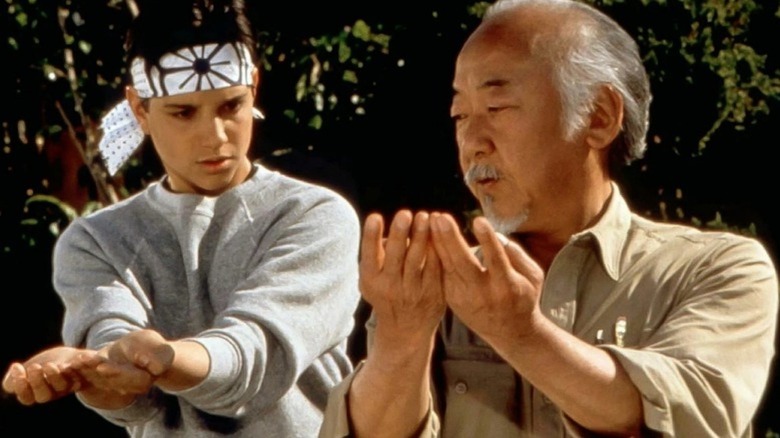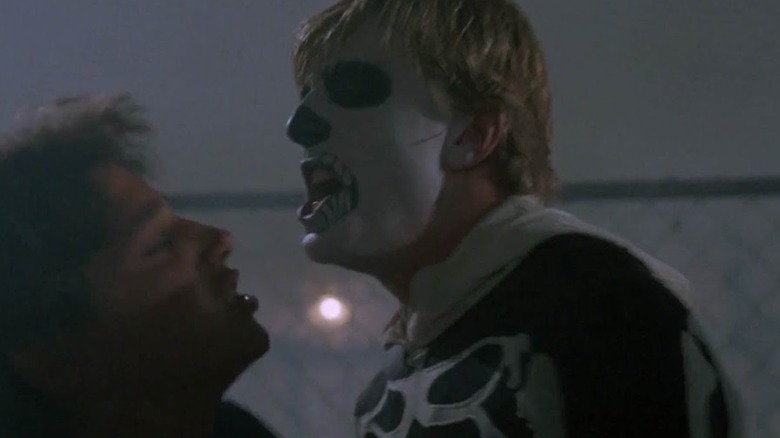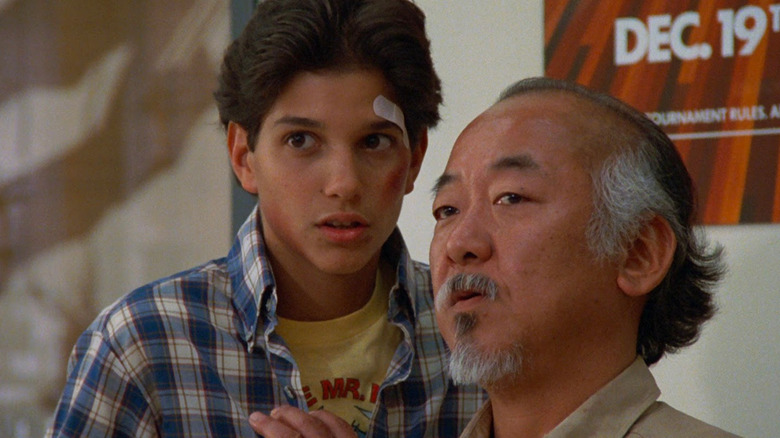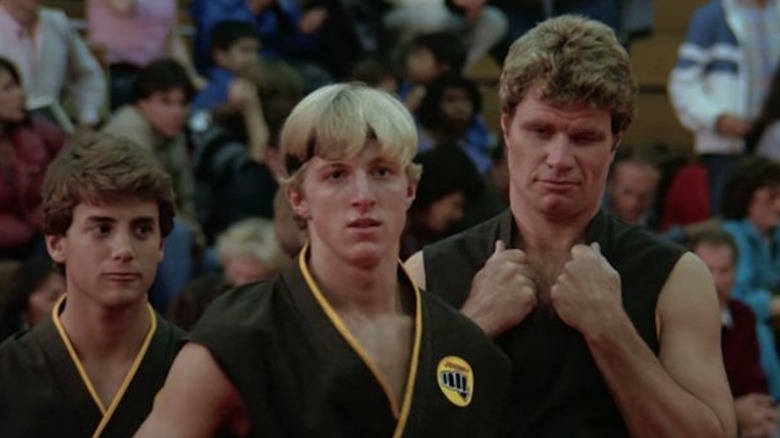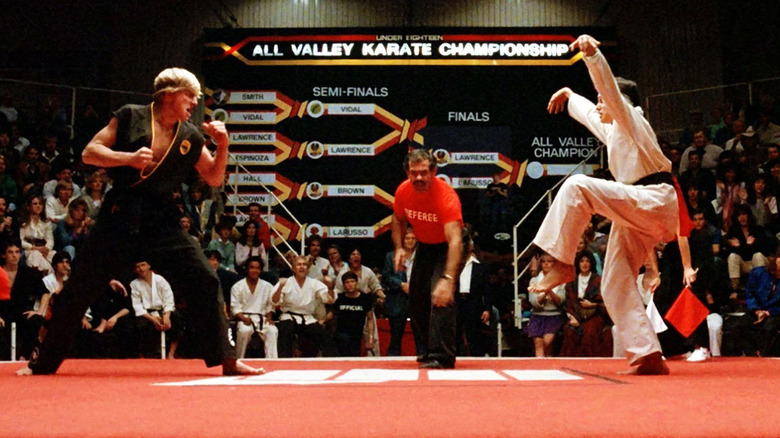One '80s Classic Is A Case Study In How The Box Office Used To (And Still Should) Work
The 1984 summer movie season kicked off in May and early June with a flurry of blockbusters. "Indiana Jones and the Temple of Doom" opened to a gargantuan $25 million over Memorial Day weekend, and, unconcerned about getting chopped up in the mega-sequel's wake, Paramount scored a $17 million debut the following weekend with "Star Trek III: The Search for Spock." If you're thinking the studios might sit out a weekend while these films dominate the box office, Columbia and Warner Bros opted to throw a couple of haymakers over the June 8 three-day with, respectively, "Ghostbusters" and "Gremlins."
And then, on the fourth weekend of the summer movie season, Hollywood at last took a breather. With kids fresh out of school, the studios sat back and watched the aforementioned titles continue to flourish, while other pricey gambles (e.g. "Streets of Fire" and "Once Upon a Time in America") flopped (the only new release over the June 15 frame was a one-screen launch for John Huston's soul-staining, one-half-quadrant classic "Under the Volcano").
Then on June 21 — with "Indiana Jones and the Temple of Doom," "Ghostbusters" and "Gremlins" surging ("Star Trek III: The Search for Spock" steadily faded as, with a few exceptions, "Star Trek" films are wont to do) — the studios went buck wild and unleashed four new wide-to-wide-ish releases: "Rhinestone," "Top Secret!," "The Pope of Greenwich Village" and "The Karate Kid." What may appear to be an insane game of box-office chicken was actually the start of the summer's second wave. The preordained blockbusters were in theaters, where they'd do bang-up business through to Labor Day (if not beyond). From this point forward, the studios would offer a mix of probable hits, known duds, and potential sleepers. That last group was reliant on carefully executed marketing and release strategies. Most importantly, they required patience. Without patience, "The Karate Kid" might've been out of theaters by August instead of legging it out to become 1984's fifth highest-grossing film and a still-kicking franchise.
The Karate Kid trades blows with a country-singing Sly Stallone
June 21's splashiest release was "Rhinestone," a critically reviled comedy starring Dolly Parton as a country music singer who bets her manager she can turn a tone-deaf cabbie (Sylvester Stallone) into a crooning sensation. 20th Century Fox opened the starry film on 1,630 screens (about as wide as you could release a movie in 1984), while Columbia Pictures mini-platformed "The Karate Kid" on 931 screens. What gives?
Columbia knew from test screenings and reviews that "The Karate Kid" was a stand-up-and-cheer sleeper smash in the making (from, coincidentally, John G. Avildsen, the director of "Rocky"), whereas Fox was well aware they had a star-studded, smash-and-grab stinker. Audiences were aware, too, which is why "Rhinestone," despite Sly being the biggest box office draw in Hollywood at that moment, finished fourth that weekend with a paltry $5.4 million gross. Meanwhile, "The Karate Kid" was a close fifth with $5 million. No need for alarm, right?
Budgeted at $8 million, Columbia wasn't going to take a hit regardless of how "The Karate Kid" performed. But, again, they had high hopes, and that opening $5,400 per screen average (compared to "Gremlins" posting a $7,558 per screen in its third week of release) indicated that the rave notices hadn't quite hooked ticket buyers. The fate of Avildsen's film would be determined by word of mouth. Surely, the uplifting tale of a bullied new kid who, emboldened by the wise/unconventional training of an Okinawan-born World War II veteran, takes on his high school tormentors — and, after absorbing beating after beating, bests the alpha villain in a prestigious karate tournament on one good leg with that cool-looking crane kick would win moviegoers over.
The film's second weekend was crucial, and that's when "The Karate Kid" nearly got waxed off the nation's screens.
The Karate Kid finds its fight
With the July 4th holiday looming, the studios unloaded two malodorous sequels in "Cannonball Run II" and "Conan the Destroyer," and the adults-only sex comedy "Bachelor Party" (which received some surprisingly good reviews based largely on the amiable star appeal of some guy named Tom Hanks). Having added seven screens, this was the box office moment of truth for "The Karate Kid," and it got spin-kicked into seventh place behind all of the new releases. Worse, it slid 11 percent from the previous weekend.
Heading into the July 6 weekend, with no new releases waiting, Columbia dropped four screens, suggesting they were giving up on the film. This, for whatever reason, is when the enthusiastic word of mouth finally delivered. "The Karate Kid" exploded with an unexpected 18-percent increase and a $5,668 per screen average. Yes, it finished fourth behind "Cannonball Run II," but it was on half as many screens. And that was it: for the rest of the summer, no film could sweep the legs out from under Avildsen's underdog. By Labor Day, it had grossed $70 million (on its way to a domestic total of $91 million).
Amazingly, "The Karate Kid" never finished above fourth place at the box office, nor posted higher than a $5.3 million weekend — but the weekends didn't matter. It was summer: kids were out of school, and the film did solid business every single night. Why the delayed response? Because "The Karate Kid" was the go-to option after everyone had checked out the blockbusters. "Let's see if 'The Karate Kid' is as good as everyone says." It was better. I saw it twice theatrically that summer, and, 40 years later, I think it's still one of the best audience movies ever made, and not just because it emphatically sticks the landing. It's everything that comes before that moment, which arrives after the two-hour mark, that makes it special.
And sadly, 40 years later, there's no way this movie would be made at a major studio, let alone be allowed to find its audience theatrically.
No Karate Kid, no Cobra Kai
"The Karate Kid" doubles as a coming-of-age high-school drama and a deeply moving tale of an unlikely friendship between a bullied teenager and an apartment maintenance man who, it's eventually revealed, lost his family in an internment camp while he was serving his country in World War II. That reveal hits hard because Avildsen and screenwriter Robert Mark Kamen — much as Avildsen and Stallone did with "Rocky" — allow their story to unfold at an unhurried pace.
In 2024, if, by some miracle, "The Karate Kid" received a theatrical release, it would go wide on over 2,000 screens, and quickly hemorrhage screens after that second weekend dip. Most likely, it would go to streaming, where its nuanced, slow-building narrative would be challenged, if not completely ruined, by ceaseless phone check-ins. Worst of all, no one would get to experience the rush of watching "The Karate Kid" in a packed house, where Avildsen and Bill Conti's triumphant score sends you sailing out of the theater elated and maybe just a little teary.
Without Columbia's managed $8 million risk and faith that Avildsen had crafted a crowd-pleasing winner, there would be no "Karate Kid" franchise. Granted, I wouldn't mourn the loss of the uneven sequels or the unexceptional remake, but those first couple of "Cobra Kai" seasons (out of six) were unexpectedly superb. And I'm definitely in the minority when it comes to "The Karate Kid Part II;" many people love it almost as much as the first movie (to quote the great Chuck D, "What moves you, moves you").
The theatrical experience is about more than visual and aural spectacle
Films are still joy delivery machines, and we still get off on the high of an audience pop (as those YouTube videos of people freaking out en masse over big moments in Marvel Cinematic Universe movies prove). Relegating a rousing gem like "The Karate Kid" to streaming would be a crime, as would yanking it from theaters before it has a chance to catch on with moviegoers.
Theatrical exhibition needn't be an all-or-nothing proposition. Perhaps the recent leggy success of the rom-com "Anyone But You" will remind studios that, in an age where multiplex screens are dominated by (mostly) empty event spectacle, that mid-size sleeper needs a few weekends to wake up and become a wildly profitable hit, if not an outright blockbuster. The world is a better place with a compassionate mainstream movie like "The Karate Kid" in it, and my life was certainly enriched by watching it with a rapt crowd in a small Ohio town. I want to believe we can get back to this. We need to get back to this. We're woefully deficient in shared catharsis, and this makes it so much easier to wall ourselves off emotionally and live in our own bubble of resentment, suspicion, and outright hatred.
Not to get all "Movies, now more than ever" here, but I believe in the church of cinema. I've witnessed the power of motion pictures inspire people to do good work. I also once saw a dude puke up the better part of a large pizza during a midnight screening of "Deep Blue Sea," and, y'know, that was cathartic in its own right, too.
